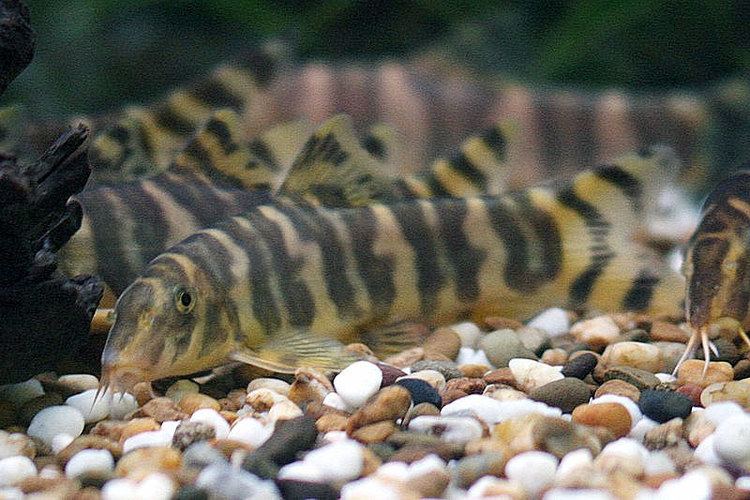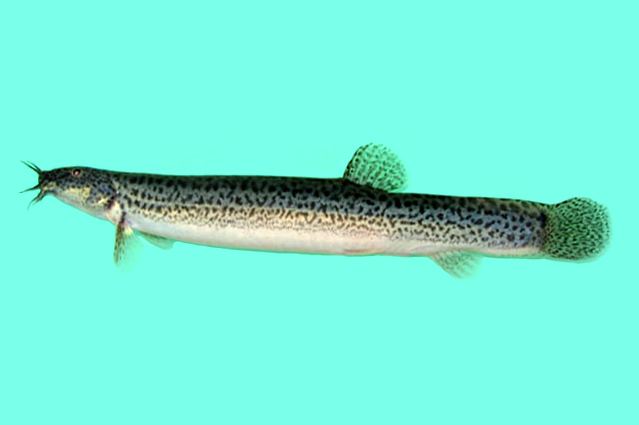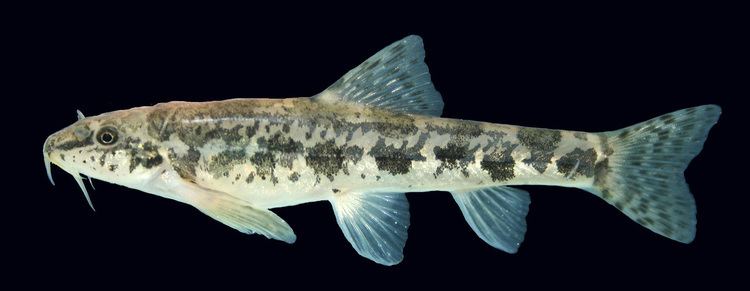Phylum Chordata Rank Family | Scientific name Cobitidae | |
 | ||
Lower classifications | ||
Cobitidae, also known as the True loaches, is a family of Old World freshwater fish. They occur throughout Eurasia and in Morocco, and inhabit riverine ecosystems. Today, most "loaches" are placed in other families (see below). The family includes about 260 described species. New species are being described regularly.
Contents
- Pangio kuhlii
- Description and ecology
- Systematics
- Use by humans
- As aquarium fish
- Cultural references
- References

Pangio kuhlii
Description and ecology

The body forms of the Cobitidae tend to be vermiform – worm-shaped, long and thin. Most true loaches do not have true scales, and like many other Cypriniformes or catfishes, they have barbels at their mouths (usually three to six pairs). Some other traits typically found in this family are a small bottom-facing mouth suited to their scavenging benthic lifestyle, an erectile spine below the eye, and a single row of pharyngeal (throat) teeth.

True loaches are mostly scavengers and are omnivorous, usually not very picky about their food. They may eat aquatic crustaceans, insects, and other small invertebrates, as well as scraps of organic detritus. Many live in eutrophic waters of generally poor quality and feed on tubifex worms and similar benthos associated with such habitat. Some of these loaches have adapted to low oxygen levels in warm, muddy rivers or dirty ponds by being able to gulp up atmospheric oxygen. Some species, particularly from the genera Cobitis and especially Misgurnus, are sensitive to changing air pressure. They change their behavior accordingly, and as these changes in activity are usually followed by a change in weather, they are commonly known as "weather fishes" or "weather loaches".

Some Cobitidae have been introduced to foreign lands, where they may pose problems to local wildlife as invasive species. Other true loaches, many of them migratory fish, have been seriously affected by habitat destruction, chemical pollution, and damming, and are considered threatened species today. Some migratory species are popular aquarium fish and since they are very hard to raise in captivity, overfishing has seriously depleted once-common stocks in several cases.
Systematics
The other "loaches" used to be included in this family, but nowadays are recognized as well-distinct members of the order Cypriniformes. Together with the suckers (Catostomidae), the "loaches" made up the superfamily Cobitoidea. However, the sucking loaches (Gyrinocheilidae) were easily recognizable as relatives of the suckers.
Eventually, the hillstream loaches, though more similar to the true loaches than the other two presumed Cobitoidea, were recognized as distinct enough to be better regarded a family in their own right - Balitoridae. And as it seems the "sucking Cobitoidea" are quite distant indeed, perhaps even markedly closer to the Cyprinidae, thus the old superfamily Catostomoidea warrants revalidation. Finally, the puzzling mountain carps were most often considered the distinct family Psilorhynchidae in recent times. In a number of systematic schemes, though, they were placed in the Balitoridae (or Balitorinae, when these were included in the Cobitidae). In fact, they seem to be loach-like carps and belong in the Cyprinidae.
In 2012, Maurice Kottelat reviewed the loaches and elevated the former subfamily Botiinae to its own family, Botiidae, and established the family Serpenticobitidae for the genus Serpenticobitis.
Use by humans
Some true loaches are popular as food fish in East Asian countries such as Japan. These are of importance in the fisheries or being raised in aquaculture. Small species may occasionally be caught for bait.
As aquarium fish
Many of the more brightly colored species are popular with freshwater aquarists, so are therefore of importance in the aquarium trade. Some Cobitidae often encountered in aquarium trade include:
Cultural references
Shakespeare's Henry IV, Part 1 Act 2 has:
"Why, they will allow us ne'er a jordan, and then we leak in your chimney; and your chamber-lie breeds fleas like a loach."
This might be a misprint, or an obsolete term for a dovecote, then as today notorious for "breeding" Ceratophyllus columbae fleas. Or it might indeed refer to the fish: the spined loach (Cobitis taenia), native to England, is very prolific, and the phrase can be taken to imply "...hosts fleas as abundantly as the spiny loach spawns".
In The Legend of Zelda series, the fictional Hylian Loach is a legendary fish in the fictional land of Hyrule that first appeared in The Legend of Zelda: Ocarina of Time a rare fish that can be catch in the game's fishing pond that is so difficult to catch that it requires the use of an illegal sinking lure to catch. The fish returns in The Legend of Zelda: Twilight Princess though is not as rare as it was in Ocarina of Time. Hylian Loach fry can be caught in various places around Hyrule using the standard bobber lure and fishing rod, though the adult Loaches can only be caught in the Fishing Hole in Upper Zora river. In addition to the Sinking Lure, there is also a special Frog Lure which the player can win playing the Rollgoal minigame in the Fishing Hole's cabin and unlike the sinking lure the Frog Lure is legal to use within the Fishing Hole. The game also features a book about the Hylian Loach which is found in same cabin and the cabin's owner Hena tells Link it is heartwarming about a Hylian Loach who saves Hyrule. There is even a photograph of the Pond Owner from Ocarina of Time holding a Hylian Loach that can be found within the cabin as well. Another species of Loach from the series known is known as the Termina Loach which is counterpart of the Hylian Loach native to parallel dimension of Termina and appears in the Nintendo 3DS remake of The Legend of Zelda: Majora's Mask. Unlike the Hylian Loach is more common and easier to catch as Sinking Lures are legal to use in Termina's fishing holes. Termina Loaches can be found in the Swamp Fishing Hole.
